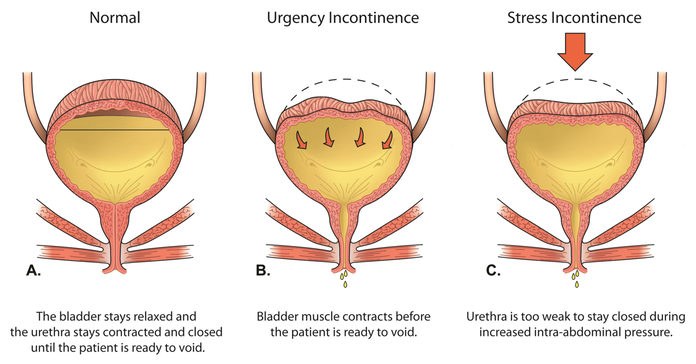Urinary Incontinence
What is urinary incontinence? It is the loss of bladder control. It is a common problem in both men and women. The severity ranges from occasionally leaking urine when you cough/sneeze to having an urge to urinate that's so sudden and strong you don't get to a restroom in time.
What happens normally? The brain and the bladder control urinary function. The bladder stores urine until you are ready to empty it. The muscles in the lower part of the pelvis hold the bladder in place. Normally, the smooth muscle of the bladder is relaxed. This holds the urine in the bladder. The neck (end) of the bladder is closed. The sphincter muscles are closed around the urethra (a tube that removes urine out of the body). When the sphincter muscles keep the urethra closed, urine doesn't leak. Once you are ready to urinate, the brain sends a signal to the bladder. Then the bladder muscles contract. This forces the urine out through the urethra, the tube that carries urine from the body. The sphincters open up when the bladder contracts.
What are the types of urinary incontinence? Urinary incontinence is not a disease. It is a symptom of many conditions. Causes may differ for men and women. But it is not hereditary. And it is not just a normal part of aging. These are the four types of urinary incontinence: Stress incontinence, Overactive Bladder (OAB), Mixed incontinence, and Urgency incontinence.
What are the treatments? There are many devices and products that collect and hold urine. They can help men and women of all ages. For some people, they are the only way to manage bladder problems. These devices can also give older and disabled persons more freedom. Treatments include: Indwelling Catheters, External Collecting Systems, Urine Drainage Bags, Catheters for Intermittent Catheterization (IC), absorbent products, and toilet Substitutes.


